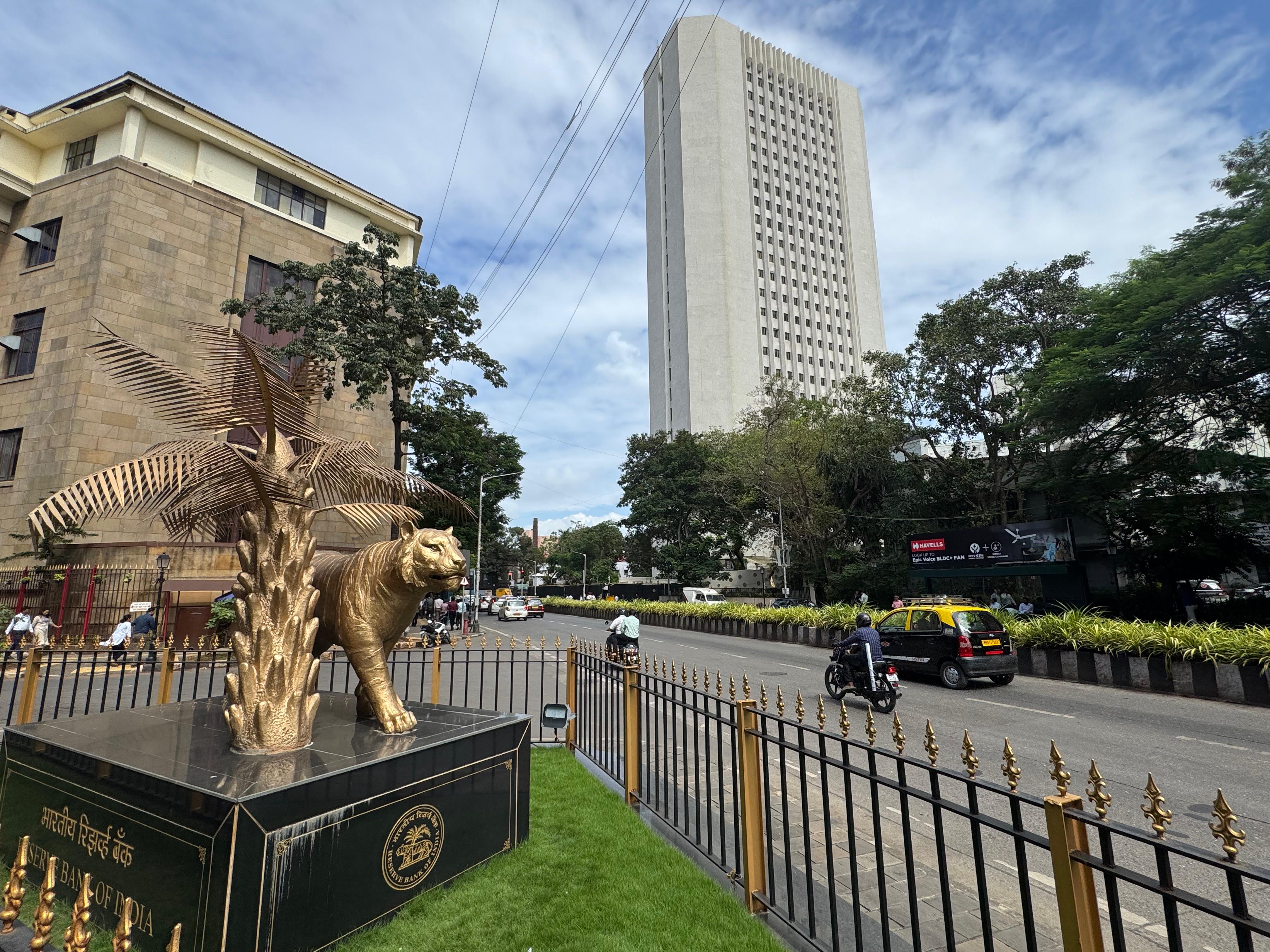.png)

By Michael Debabrata Patra
Michael Patra is an economist, a career central banker, and a former RBI Deputy Governor who led monetary policy and helped shape India’s inflation targeting framework.
October 15, 2025 at 3:34 AM IST
In 2004, skateboarder Stacy Perelta produced a stunning documentary from which the title of this article is taken. It paid homage to the brave surfers who dare to ride the world’s biggest waves. A poignant aspect of the movie is the surfers’ constant search for ever larger waves.
India may be getting poised to receive a new wave of foreign direct investment (FDI) that may overwhelm the crests that formed in 2009, 2016 and 2020 and 2022. Ironically, this surge will likely be driven by the tariffs imposed by the Trump Administration. India’s 100-day action plan, announced on August 15, 2025, spans a wide canvas. Lower taxes and simplification of laws and procedures will ease doing business.
Animal spirits are sought to be unleashed to secure self-reliance in minerals, energy, industry, defence, semiconductor chips, India's own space station, nuclear power capacity, harnessing of ocean resources and reduction of dependence on imported fuels. All in all, a new awakening for a prosperous, secure, and technologically advanced India, with one of the most vibrant startup ecosystems in the world, opening up to private participation, including FDI.
Will the global environment for FDI accommodate this anticipated swell? Individual country prospects, particularly of emerging and developing countries (EMDEs), are typically spurred or circumscribed by global trends. The golden age of globalisation, integration and liberalisation of financial flows and markets drove up global FDI right up to the mid-2000s, with flows to EMDEs peaking at 5% of their GDP in 2008. The global financial crisis dealt a cruel blow. Thereafter, years of retrenchment followed, interrupted by short-lived spikes. One occurred in 2011 on the back of cross-border mergers and acquisitions (M&As) in developed economies, and a wave of greenfield projects in Latin America and transition economies.
Another rush took place in 2015, but it was driven by corporate reconfigurations and mergers and acquisitions (M&As), including shifting headquarters for strategic reasons and for tax inversion purposes rather than new investments in production facilities. The overall trend was of declines, barring 2021, when M&A activity, international project finance and reinvested earnings in developed economies produced a strong rebound from the pandemic. This could not be sustained during 2022-24, snowballing into a double-digit decline in 2024 if flows through conduit economies such as Ireland, Luxembourg, and the Netherlands, which serve as transfer points, are excluded. According to the United Nations Conference on Trade and Development, the outlook for global FDI in 2025 is negative, overcast by rising economic and policy uncertainty and deteriorating investor sentiment.
Already, there has been a sharp drop in the first quarter of the year due to record lows in both deal volumes and project announcements. FDI fragmentation and shifts in supply chains homeward and to friendly shores are hitting EMDEs the hardest. FDI flows to these economies, which had fallen to 2% of GDP in 2023, have declined even further more recently.
Different Drums
Net flows also include outward FDI from India, which attests to the growing competitiveness of Indian entrepreneurial acumen, a broadening of India’s markets and a growing conduit for the export of goods, services and technology, as well as for the return flow of profits and dividends. The outflow of capital under FDI, as a result, seems to matter little to India as the financial account in its balance of payments remains in surplus. Since 2013-14, foreign exchange reserves have been built up year after year except for 2018-19 and 2022-23.
What about gross FDI inflows? In fact, gross flows to India have matched or exceeded the external financing requirement set by the current account deficit in almost every year! When India started to liberalise capital flows in the early 1990s, a preferred hierarchy of flows was envisaged in which FDI is at the top in view of its durable character, embodied technology, access to more efficient production processes and natural affinity to exports.
Furthermore, unlike other categories of capital flows, FDI is mainly driven by ‘pull’ factors such as India’s favourable growth differentials, increasing returns to scale and scope as a hitherto closed economy opens up, a large domestic market, relatively cheaper and abundant factors of production and natural resources, and a regime that attracts inclusive and regenerative industry in contrast to its extractive colonial past.
It is in this context that the action plan announced on August 15 and referred to earlier assumes significance. Even ahead of it, India has been bucking the global decline in FDI. Gross inflows into India had risen to $80.6 billion in 2024-25, close to the peak of $84.8 billion in 2021-22. During April-July 2025, for which data are available from the RBI, gross inward FDI has jumped 33%. Startup investments remain strong, leading all deal types in both volume and value. It is reported that during the first half of the year, there has been an increase in the number of large-value funding rounds. PE investors are taking a more hands-on role in portfolio companies, with buyouts representing a larger share of deal value as investors seek greater operational control.
The infrastructure sector, including renewable energy and electric mobility, tops investor preferences, aligning with the action plan, even as Fintech, NBFCs and housing finance companies remain a primary focus. Exit activity has stabilised, while fundraising activity has seen a rebound. Amidst the prevailing global uncertainty and caution about valuations domestically, investor sentiment is expected to improve in the second half of 2025, driven by stable macroeconomic conditions, easing interest rates, and a healthy IPO pipeline.
This renewal of FDI interest in India will be buttressed by the fact that India is actively negotiating bilateral investment treaties (BITs) with more than a dozen countries. The new BITs incorporate comprehensive protection clauses imposing binding obligations on hosts so as to enhance legal certainty and investor trust.
If the action plan gets traction, the peak of 2022-23 may well be eclipsed. As regards Trump’s tariffs, he would do well to remember the 1952 song by Pearl Bailey:
“You can sail on a ship by yourself
Take a nap or a nip by yourself
You can get into debt on your own
There are lots of things that you can do alone
But it takes two to tango…..”




